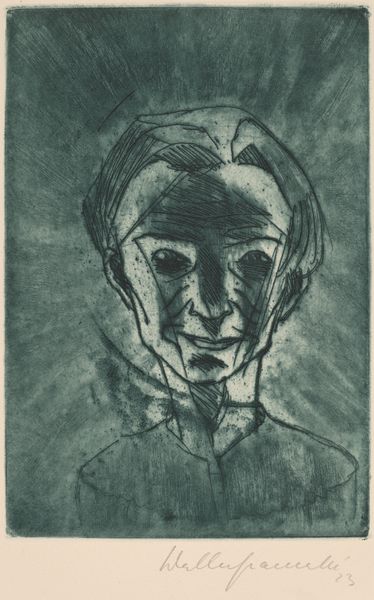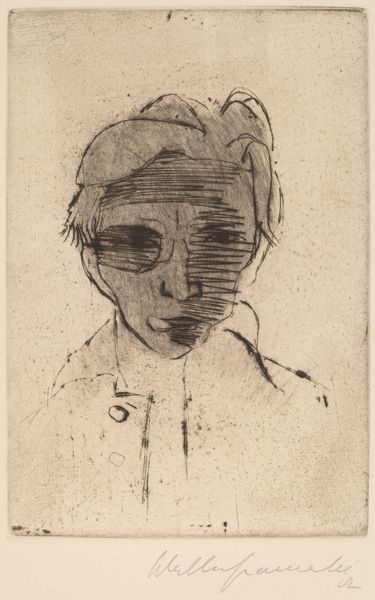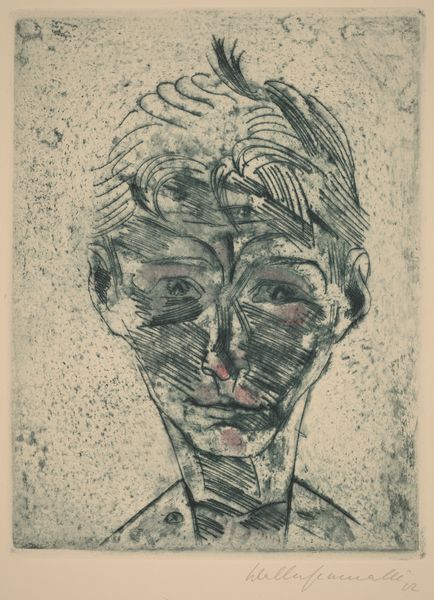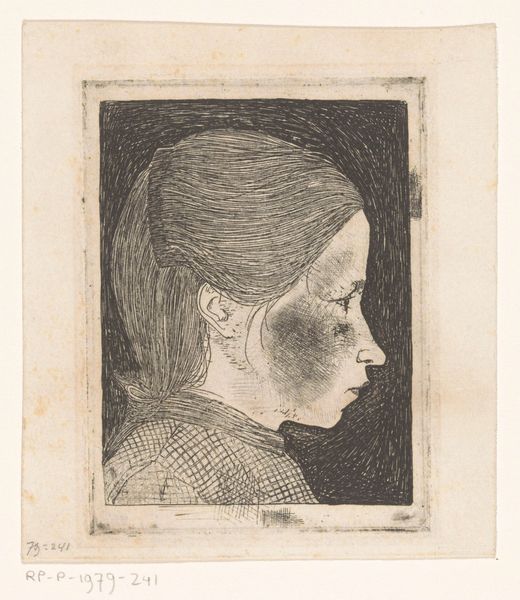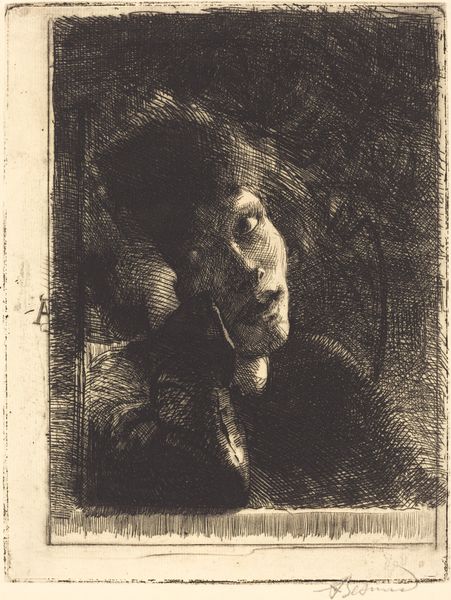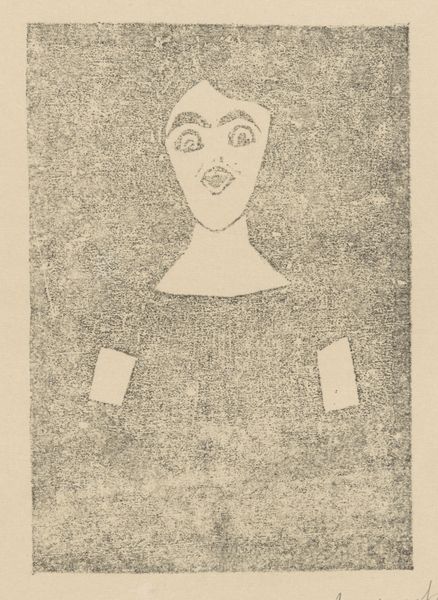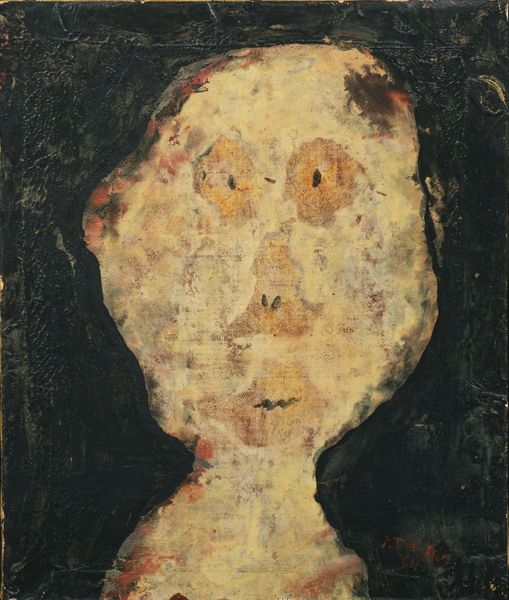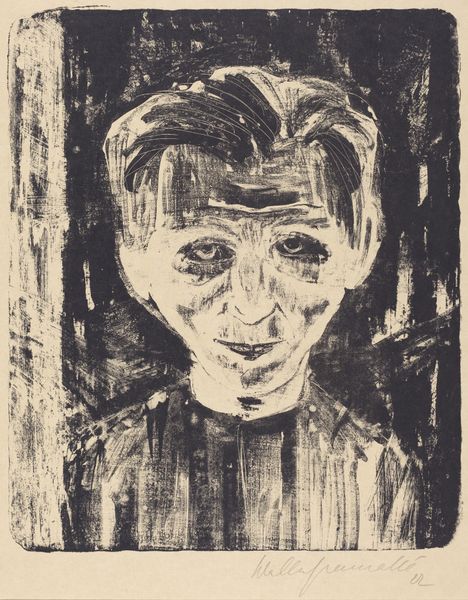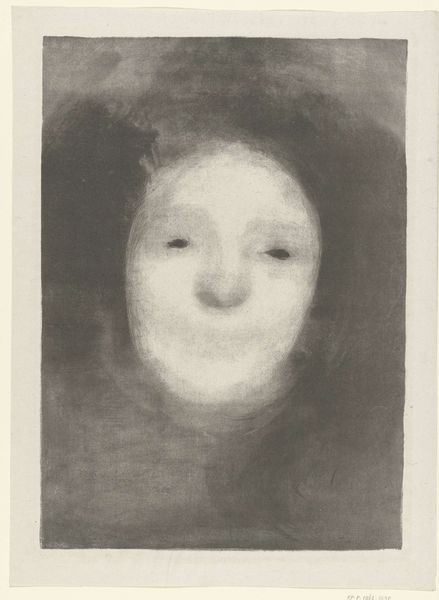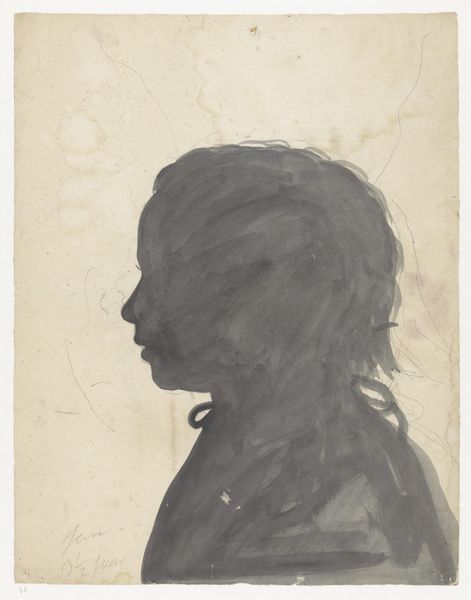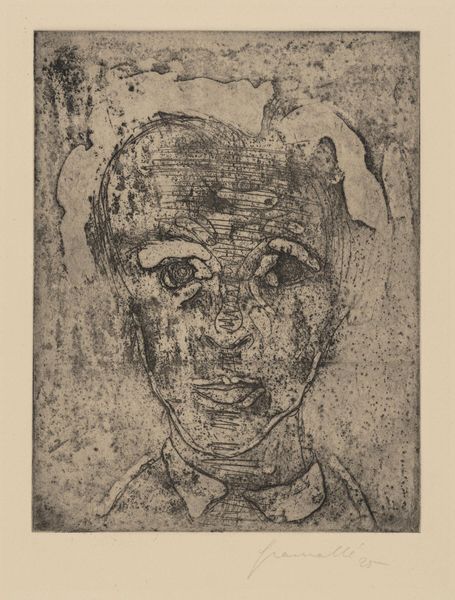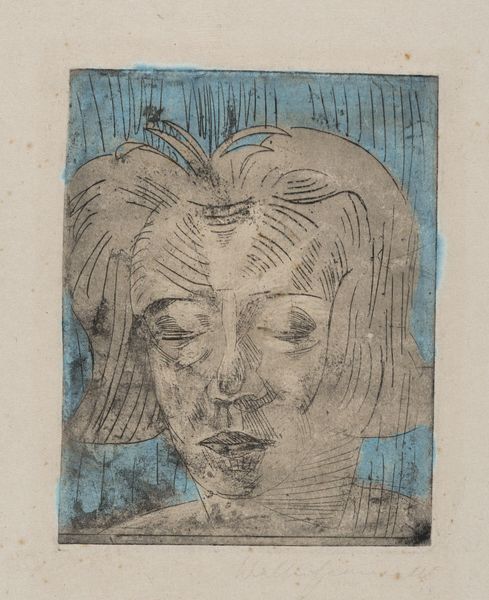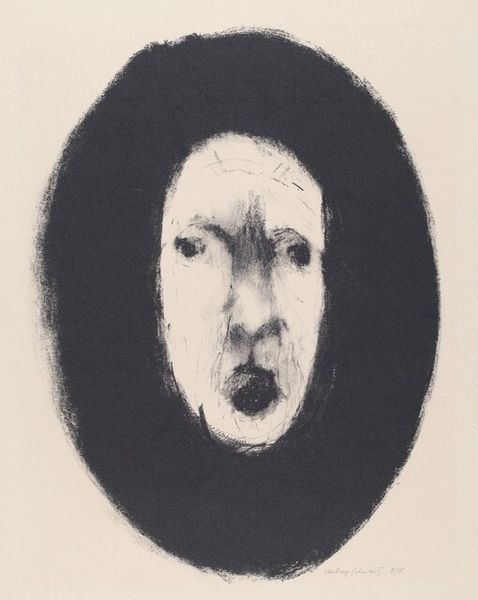
drawing, print, paper, ink
#
portrait
#
drawing
#
self-portrait
# print
#
german-expressionism
#
charcoal drawing
#
figuration
#
paper
#
ink
#
expressionism
#
portrait drawing
Dimensions: plate: 21.4 × 16.3 cm (8 7/16 × 6 7/16 in.) sheet: 52.7 × 33.8 cm (20 3/4 × 13 5/16 in.)
Copyright: National Gallery of Art: CC0 1.0
Curator: Here we have Walter Gramatté’s "Tired Man (Self-Portrait)," a 1923 drawing crafted with ink on paper. Its emotional weight is palpable from the first glance. Editor: Absolutely. The first impression is almost overwhelmingly one of resignation. The bowed head, the closed eyes… there's an undeniable weariness etched into the very lines. Curator: Note the almost brutal honesty of the marks, the stark lines creating the figure. It’s a study in economy; the artist distills emotion to its most elemental form. We could examine, for example, how the artist creates definition through contour and repetition. Editor: Those eyes! They are not merely closed; the artist has rendered them almost unnaturally sealed, underscored by a dark, evocative shade of red. This evokes deep sorrow, or perhaps a shutting out of the world. Red as a color is heavy with symbolic meaning. What resonates to me is the raw, almost painful introspection. Is this figure just physically tired, or is there a spiritual exhaustion at play? The post-war context would certainly suggest a broader societal fatigue. Curator: Indeed. Furthermore, we can see how Gramatté uses layering to generate depth, particularly in the face and against the otherwise undifferentiated dark field. The strategic deployment of cross-hatching yields not only visual interest, but also enhances the tactile quality of the work. Editor: I’m interested in the way the dark background seems to press in on the figure. It amplifies the sense of confinement. It isn't a neutral space; it feels heavy with unseen forces. Is it meant to be understood as societal pressure or perhaps something more internal? The overall somber palette pushes that interpretation further, guiding us toward melancholic contemplation. Curator: In that sense, form and symbol coalesce, rendering the work so compelling. Editor: Precisely. Gramatté invites us to recognize fatigue not merely as a personal experience, but as a shared emblem of a specific time and maybe all times, now imprinted on visual memory.
Comments
No comments
Be the first to comment and join the conversation on the ultimate creative platform.
